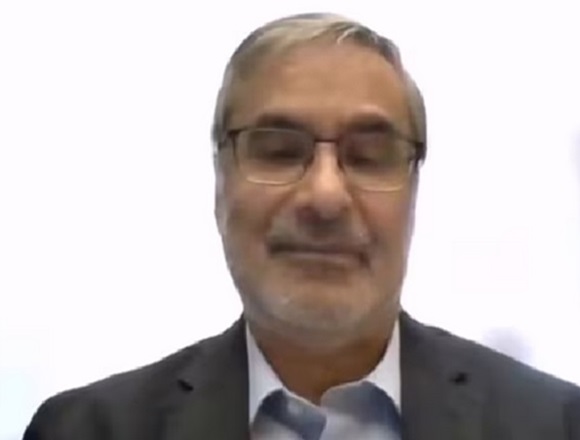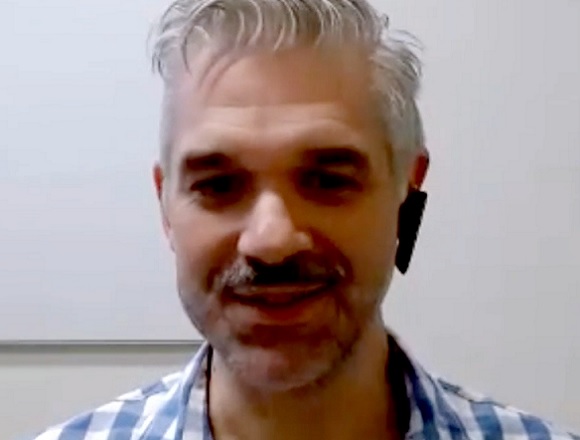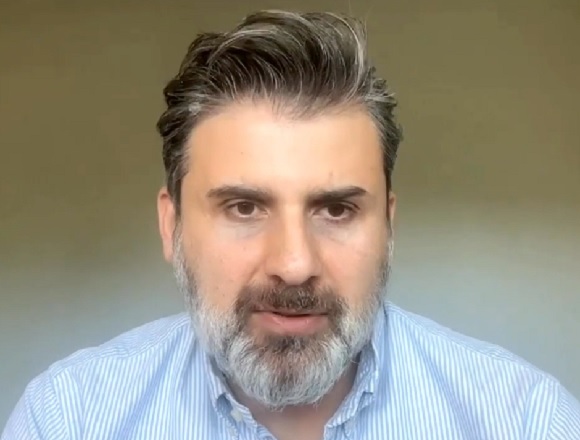Leslie Martin, MD, assistant professor in the Department of Medicine at McMaster University with the clinical focus on addictions medicine, joins forces with James Douketis, MD, to review and analyze the latest randomized trial results concerning evidence-based practices aimed at reducing opioid overdose mortality and to discuss how these findings could shape future interventions and enhance strategies to combat the opioid epidemic.
For a Publications of the Week article discussing the effectiveness of evidence-based strategies to reduce opioid-related mortality, click here.
Transcript
James Douketis, MD: Hello everyone, welcome to another edition of McMaster Perspective. I’m pleased to be joined today by Dr Leslie Martin, who’s an associate professor in the Department of Medicine at Master University, program director of the Core Internal Medicine Residency Program, but relevant to today’s discussion, also a member of the Addictions Medicine Service and also part of the Hamilton Social Medicine Response Team (HAMSMaRT) program, which aims to help people who are homeless or are vulnerable with their health care and needs.
Welcome, Leslie.
Leslie Martin, MD: Thank you for having me.
James Douketis: The topic today obviously is one that’s of great importance not only to medical professionals but to society in large. We can trace the opioid epidemic, if you will, back to the mid-1990s. Of course it’s been accelerated in recent years, so this paper that we’re discussing is I think very timely and very important. To set the stage, can you give us a little bit of a background from your perspective about managing people with opioid use disorder (OUD)? Just some general principles.
Leslie Martin: Absolutely. This is obviously a topic near and dear to my heart. When we created our service—we’ve changed the title now to Substance Use Service—it was very much in response to the opioid epidemic and shifts and changes that we’ve seen in our patient populations presenting in Hamilton but also across Ontario and nationally. The numbers reported in this study are actually slightly higher than the opioid-related deaths that we see: locally in our area we see ~25 per 100,000 patient population, and this study went up to >50 in certain of their catchment areas.
In terms of the treatment for OUD, much of it was as it was captured in the study, so you want to look at harm reduction–related practices: naloxone kits being one of those, and teaching people about safe use practices, test dosing, not using on your own, and then, obviously, many other things that we’ve seen roll out in our communities, like safe consumption sites, less toxic drug supplies, and things like that, which really align with our harm reduction policies and approaches to care.
In addition to that, they mentioned opioid substitution therapy, opioid agonist therapy. It wasn’t clear to me in this study, given the range of interventions that were offered, exactly how many were implemented and which specific aspects of opioid agonist therapy were offered. If you look at our Canadian guidelines, buprenorphine is considered first line as the medication of choice for treatment of OUD—buprenorphine/naloxone in Canada is how it’s formulated. Sorry, I don’t know what percentage was offered the first-line treatment that we’ll consider. Then, other opioid agonist therapies that are considered as second and third lines would include methadone and a sustained release oral morphine. There’s very strong evidence to show that there’s mortality benefit to offering such treatments to individuals and higher risk of opioid-related overdoses and deaths at times of initiation until you’re stabilized, as well as at times of change in your doses, so, if you start to taper down, for example.
The other thing is kind of wrap-around care, and again, we don’t know that much about the communities here, but housing, access to counseling services, those types of things as well that would be part of our patient-centered approach to care. That’s quite multipronged.
James Douketis: Ok, so let’s move on to the study. It seems like it was a very ambitious study done in the United States during the throes of the pandemic. What are your current takeaways in terms of the methods used? They aimed to implement quite a number of recommendations and at the end of the day, there did not appear to be a mortality benefit. Maybe you can just walk us through the study: what you thought of the intervention, the methods, and how you might interpret the result.
Leslie Martin: I guess the first thing I’d say is, I was very excited to see this published in the New England Journal of Medicine. It aligns with local research that we have tried to do in terms of providing patient-centered care, multipronged aspects of care, to individuals. And, as you said, quite ambitious across the number of people, and the number of different communities, and trying to create a randomized controlled design here to compare communities where they rolled out these interventions to communities where they had yet to do so, and then rolling those communities in after the fact.
To summarize the study, they included 67 communities, which included 8.2 million people. Again, a huge number of individuals that they were trying to capture in their study. And then they either assigned those to the intervention or to a comparator arm, and they tried to include both rural and urban communities in their approach. My understanding is that they offered a huge range of interventions and they tried to engage peer workers, and people with lived experience, and people within the communities that have worked with these patient populations to determine interventions that would work well within their community. And they gave some roll-in time and then they had a steady window.
One of the limitations, I think because of the pandemic—and we saw this locally—is that they were trying to roll out these interventions at a time where there was a huge resource constraint. They do speak as one of their limitations about how that could have impacted both the implementation of those interventions as well as perhaps the recruitment and retention of individuals that were involved in that.
I have to fathom that played a part in whether they were going to see an impact of this because we saw that locally in much of our work: it was hard to enroll people, hard to maintain study staff, hard to get study staff into spaces during quarantine, and things like that. Of the strategies that were selected—I think they highlighted 615—only 235 were actually implemented.
In terms of evidence-based care, we know that opioid agonist therapy has a huge impact, and only 36% actually involved the use of medication, so perhaps [there were] some barriers to implementing some of the evidence-based care that we might have suspected to impact the outcome of interest, which was opioid-related death and mortality in this study. That’s the main outcome that they focused on.
They also did look at adverse events, and I believe that they defined those as accessing emergency-related services, so where it wasn’t a death from the opioid overdose but perhaps accessing emergency services in the setting of an overdose event.
In terms of the window of observation, it was only one year that they had articulated as their window of observation. If you do look at the breadth of the interventions that they were trying to implement, the time frame with which they were implementing those being in our pandemic time period, again, they highlighted this is limitation. One of the first things that came to my mind is, was there sufficient roll-out time to impact the outcome of interest, which is mortality? And then as well the spread of the different interventions that were implemented.
They actually had a hard time capturing the number of individuals that were exposed. They describe some of the education as being social media, posters, which makes it very difficult to know the individuals that maybe crossed paths with that content and that would have benefited from it. They really were able to say as a single service had been delivered, but they weren’t able to say the number of people that had witnessed that resource to hopefully benefit from that resource.
I think for me, when we talk about the limitations, if you’re ok for me to go there, I think this is a really great thing that they tried to do and I think it aligns with much of the work that we’ve tried to do locally. My hope is that with more time to actually implement, with more resource, perhaps recognizing the constraints in the pandemic, as well as time to capture the impact of their intervention, we might have seen greater impact from this. That said, it is a very complex space, and I do think mortality is only one outcome of interest.
Obviously, in a big study like this it’s very difficult to look at more nuanced outcomes, but work that we’ve done locally has really tried to look at patient experiences, cravings that they’re experiencing while they’re on their opioid agonist therapy, if we are making patient-centered differences that maybe won’t be captured by mortality alone. I think because of the breadth of their study, mortality was a really logical outcome and quite easy to measure in comparison to those more nuanced metrics, which would be difficult in such a big study, but it’s not the only outcome of interest and perhaps there are other things with which this intervention benefited the patients that wouldn’t be captured by mortality alone.
So, I think, kudos to the team. I think it’s a really great piece of work that they did and it should not be undermined by the fact that it didn’t shift their outcome of interest.
James Douketis: So, just to finish off, it seems like this in a way reinforces what you’re doing in your day-to-day practice and maybe provides a springboard for future research, or maybe there will be an additional analysis coming forth from this work. Would you agree with that or is there something that we need to look at in terms of next steps here?
Leslie Martin: I think absolutely, it’s a springboard for future research, and I would just hate to see people say, “Okay, now stop here. This study was done, it was a randomized controlled trial (RCT), which is great and actually fairly rare in this space, and we didn’t see the needle move, so we should stop trying.” I hope nobody takes that message away. I think what it lets us know is that it’s a complex space to work in. Multimodal approaches are definitely the right way, but measuring the impact of those multimodal approaches is nuanced and can be challenging. Let’s not give up here. Let’s keep chipping away at this.
James Douketis: Dr Leslie Martin, thank you so much for providing your insights and continued success in your area of work. It’s very important. Hopefully we’ll see some more research in this area and this is just a major first step forward. Thank you again very much for joining us.
Leslie Martin: Thank you for having me.
 English
English
 Español
Español
 українська
українська










